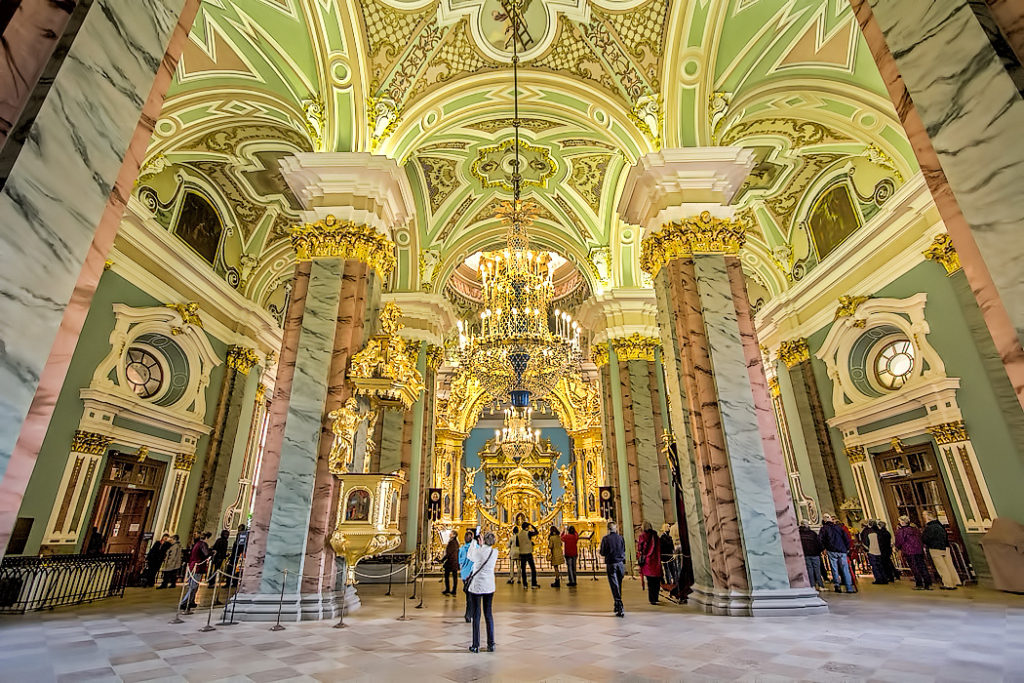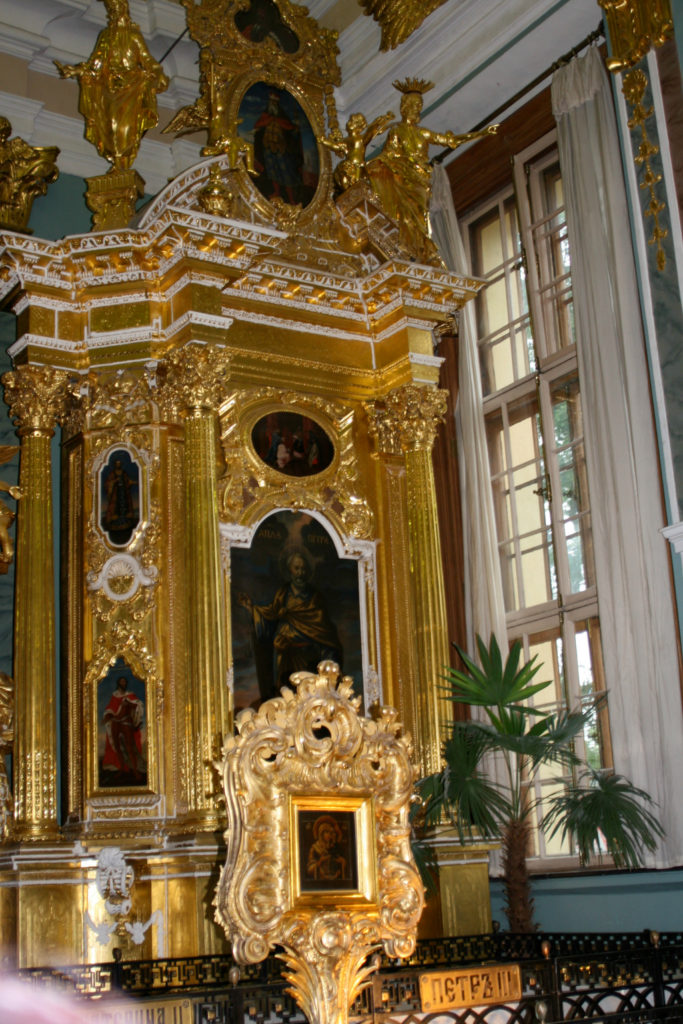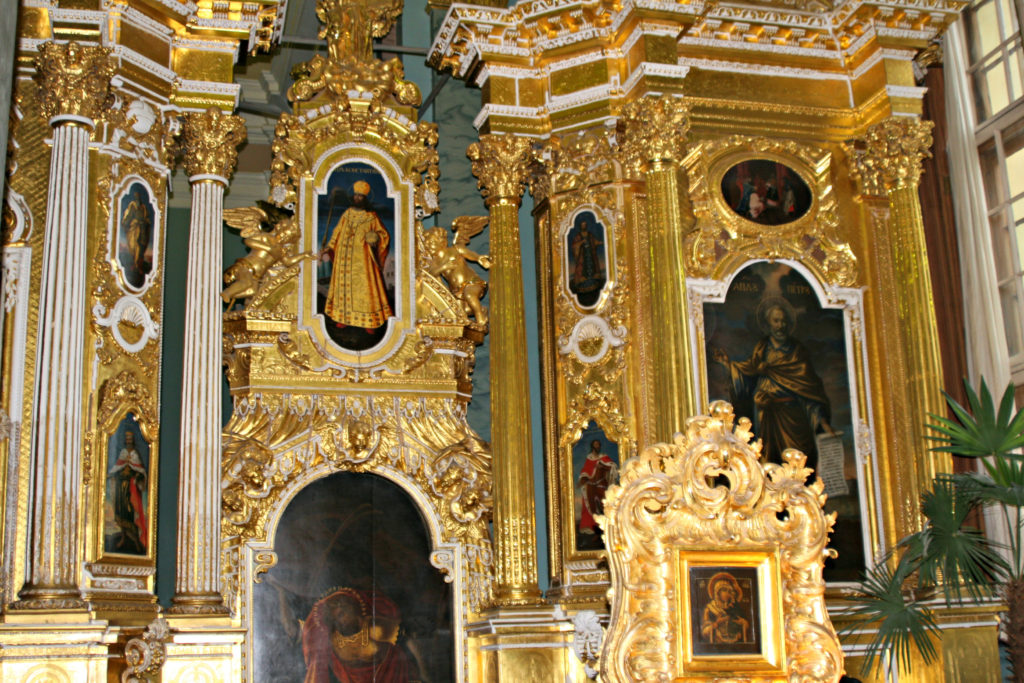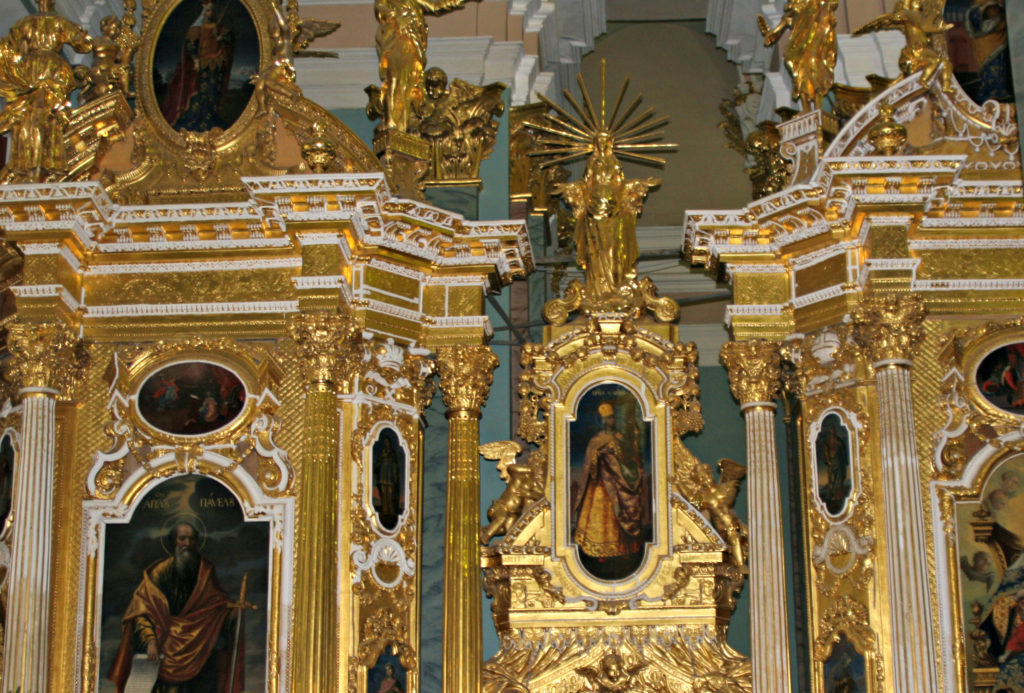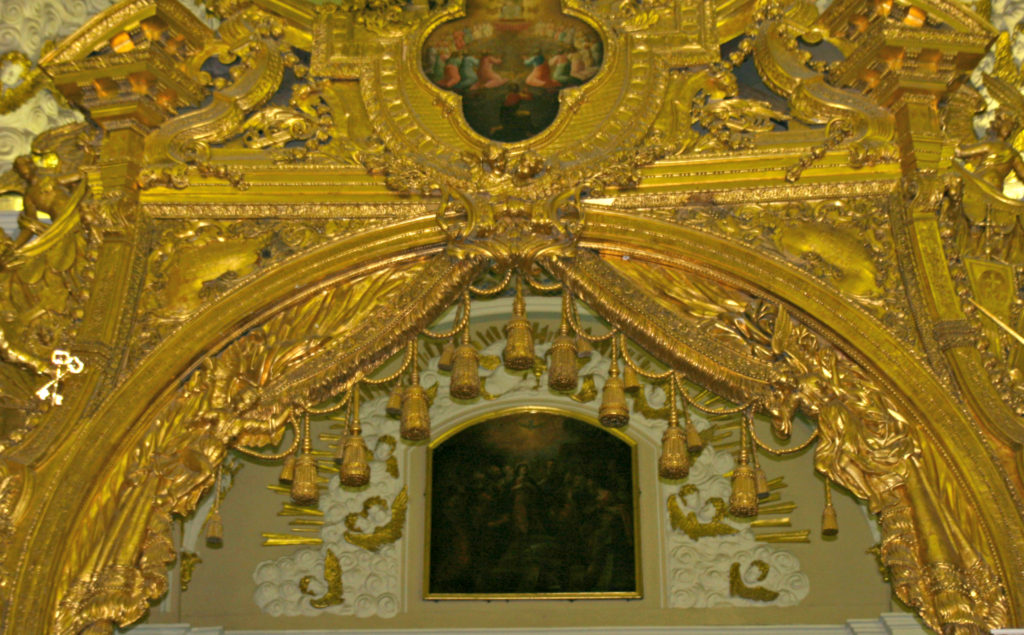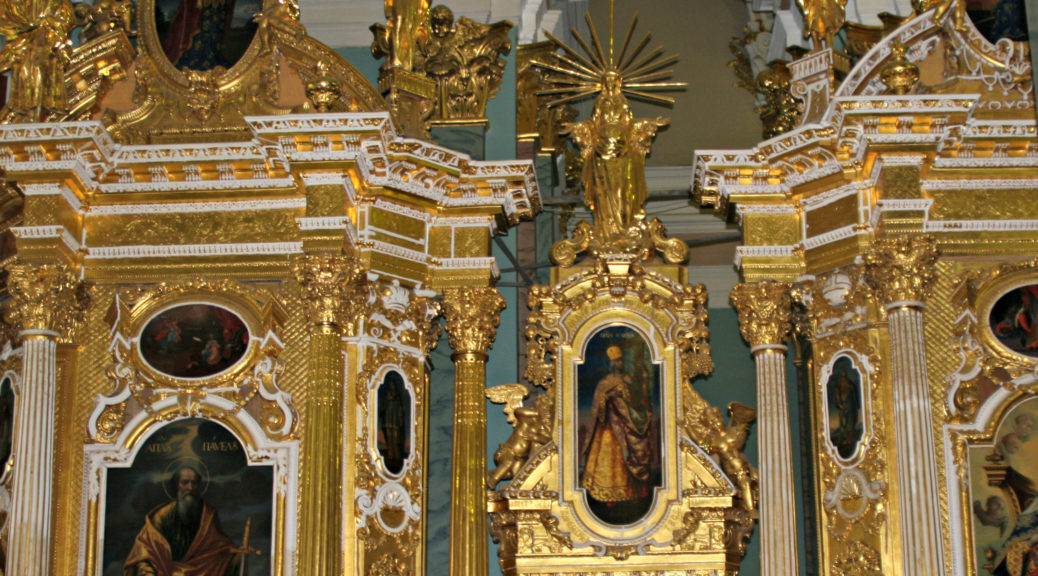
Peter and Paul Fortress and Cathedral
The last church we would visit in St. Petersburg was the Saints Peter and Paul Cathedral, located within the Peter and Paul Fortress. Before I talk about our visit to the cathedral, let me give you a little history. During the Great Northern War (1700-1721), Russia challenged Sweden, regaining some of its land, and giving the Russians access to the Baltic. In 1703, Peter the Great established St. Petersburg. He ordered that a fortress be established on Zayachy (Hare) Island on the Neva to protect the land taken back from Sweden. The fortress was the Peter and Paul Fortress – an aerial view is depicted immediately below. The style of the fortress is referred to as a “star fortress” which makes sense looking at the aerial view. It was initially a fortification of wood and earth, but between 1706 and 1740, it was rebuilt of stone. It had six bastions – these are built at an angle to the main wall so artillery could be aimed in different directions. While it was never used to defend Russia, it was used to fire on the Winter Palace in October, 1917 by the Bolsheviks.
The first building within the fortress was the Saints Peter and Paul Cathedral, originally built of wood and consecrated in 1704. The building we see today was built of stone and consecrated in 1733. It serves as the burial place for many of the Russian emperors and empresses including Peter the Great. The cathedral has a beautiful spire and is the second tallest building in St. Petersburg (a television tower is the tallest).
Through the years, the buildings within the fortress have served many functions. The St. Petersburg Mint is one of the original buildings within the fort and still serves its original purpose, printing money. Other buildings were used as a prison, holding political prisoners including Peter the Great’s son, who opposed his reforms. In the 1930’s, the Gas Dynamics Laboratory was built on the island and was used to conduct some of Russia’s most important rocket testing experiments. Today many of the buildings are owned by the State Museum of the History of St. Petersburg.


Like the dome of St. Isaac’s Cathedral, the spire on the Saints Peter and Paul Cathedral is a very recognizable part of the St. Petersburg skyline. It is part of the bell tower and was initially made of wood. It suffered damage from strong winds, lightening and fires and was replaced by a metal spire in 1857-58. The spire is now just over 400 feet tall. The angel at the top is a weather vane. The spire and angel weather vane are depicted in the first two pictures below.
The initial carillon was ordered by Peter the Great in 1720. Unfortunately, the bells were destroyed in a fire in 1756. A new set of bells were installed in 1776. These were replaced again in 2001. The present carillon has 51 bells with weights ranging three tons to 22 pounds. You will see pictures of the carillon in the next two pictures.
Space began to run out for future burials of emperors and empresses and their families so the Grand Ducal Burial Chapel was built adjacent to the Cathedral. Built in 1896, it provides 60 additional burial spaces. Grand Duke Alexei Alexandrovich, a son of Alexander II, was the first to be interred here. The last picture in this section is the dome of this Chapel.
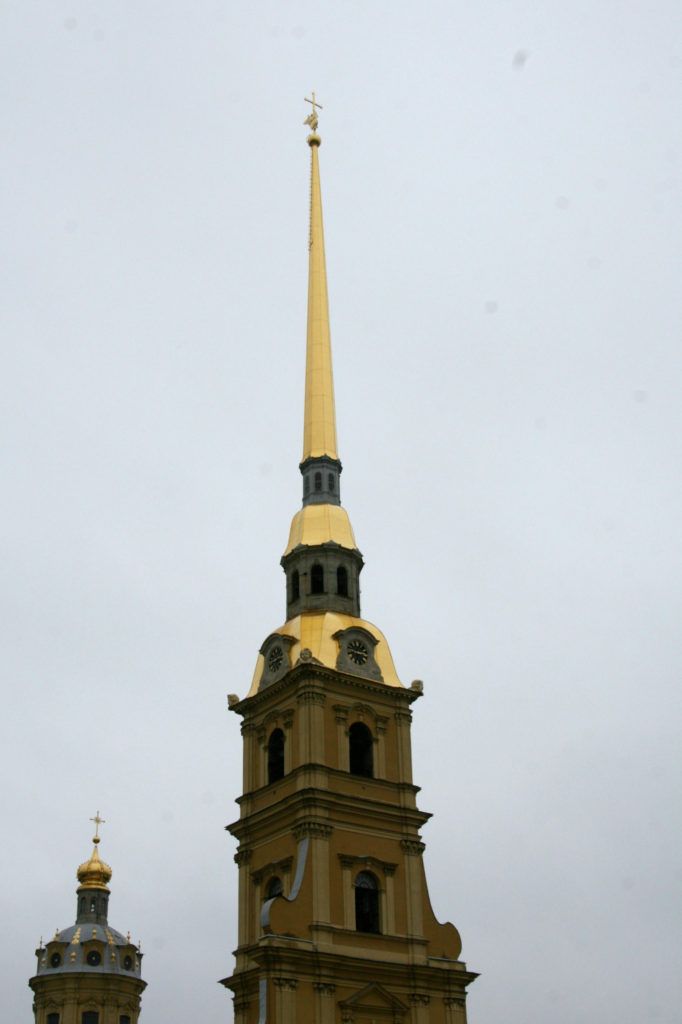

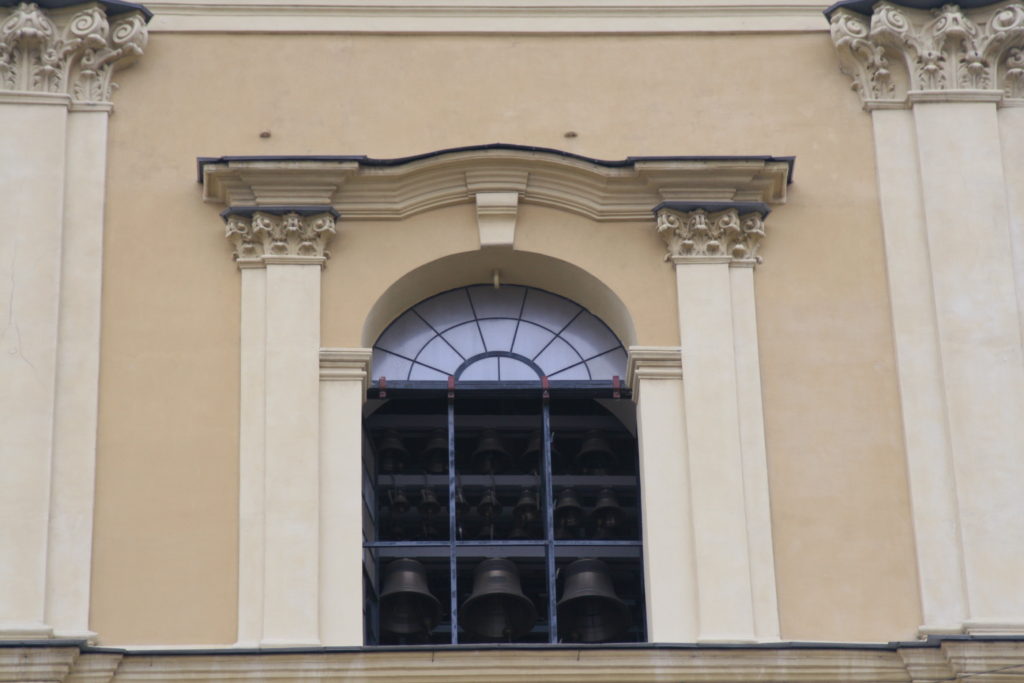
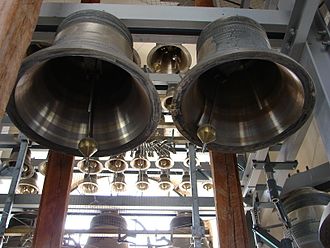
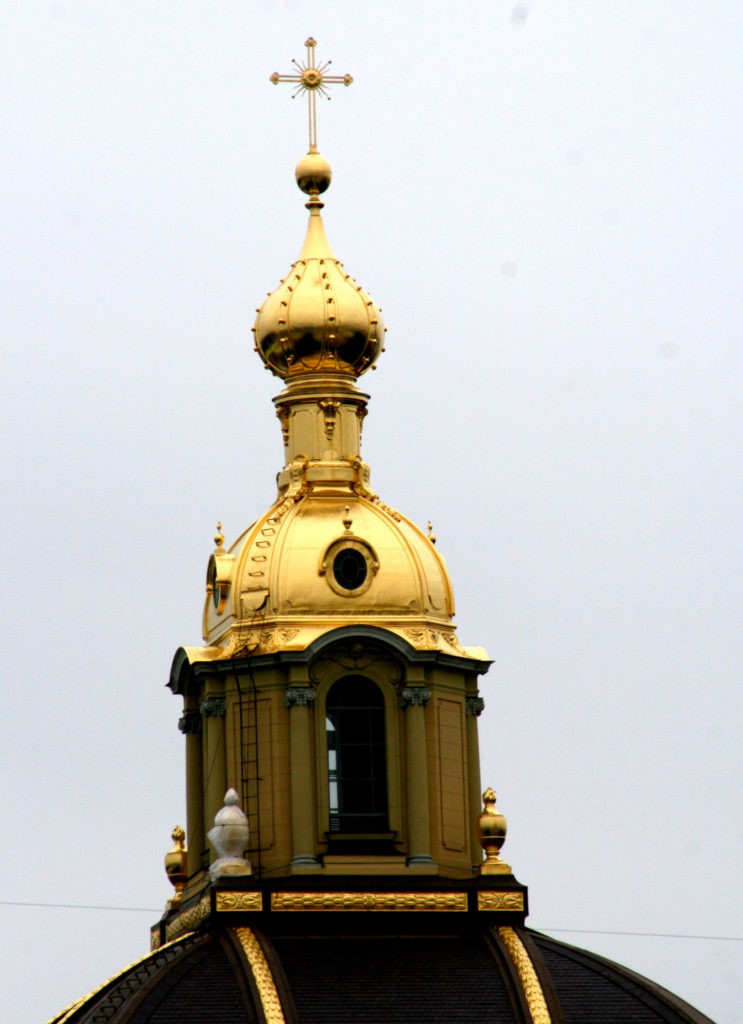
Peter the Great’s coffin was initially in a monastery but moved to the Saints Peter and Paul Cathedral in 1731. His two-year old daughter had also been buried here (perhaps the first burial) before the cathedral was even finished. After Peter the Great’s body had been moved here, all emperors and empresses, with the exception of two, were buried here through Nicholas III – there are a total of 41 tombs here.
In 1865, the headstones were all replaced with white marble sarcophagi topped with a bronze cross. Only two of the tombs are not white marble. Alexander I’s sarcophagus is made of a green jasper and his wife’s, Maria Alexandrovna, is made of a pink rhodonite.
The first two pictures below show the sarcophagus of Peter the Great (it is near the wall with a bust at one end). The third picture is of the sarcophagi of Alexander I and his wife. The last picture is of the Chapel of St. Catherine the Martyr, located within the cathedral. Nicholas II, his family, servants and their doctor were buried here in 1998. They had been imprisoned and then assassinated, possibly at the order of Lenin. There was great mystery about their fate (due to a cover-up) but their burial site was discovered in 1979 and they were reburied in the Saints Peter and Paul Cathedral in 1998. A picture of the family sits on a pedestal in front of plaques with their names mounted on the wall of the chapel.

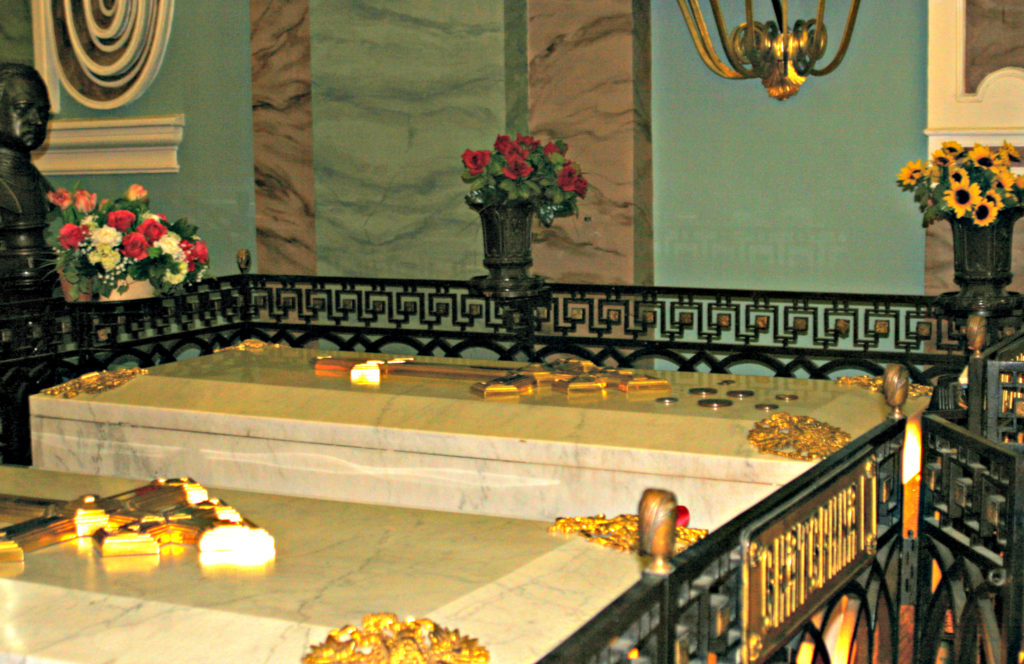
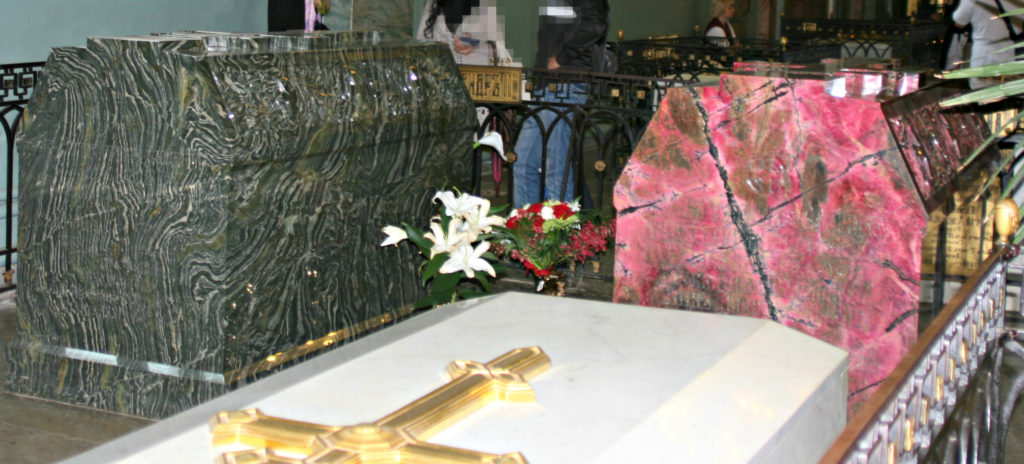
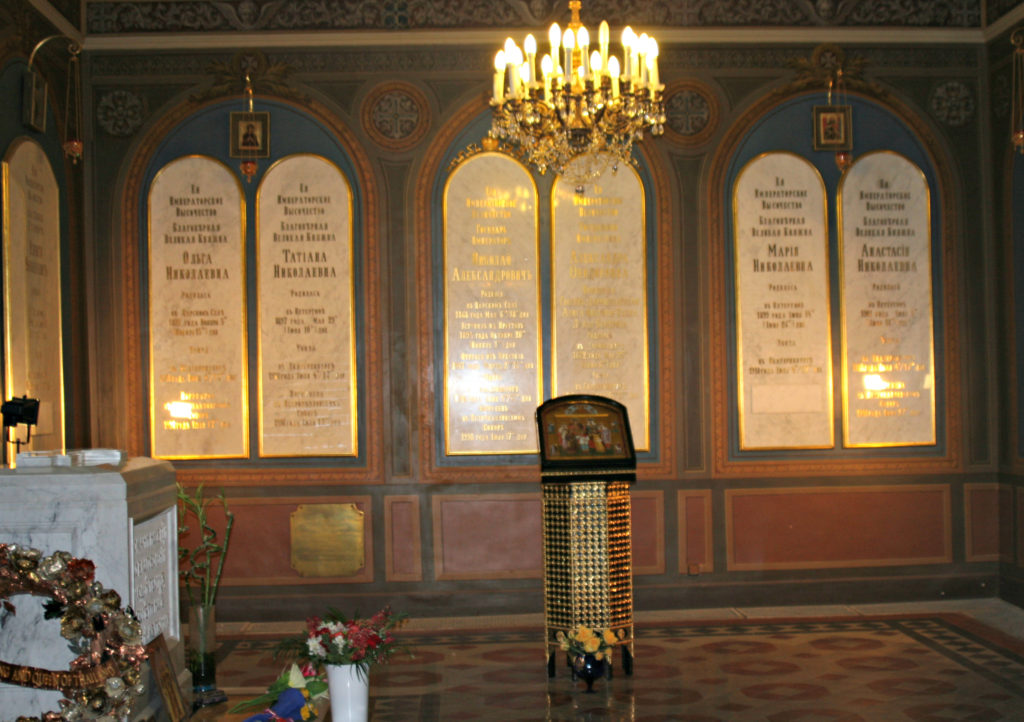
The cathedral is more than a place to inter former rulers of Russia. In fact it is not known if this was the original intent of the cathedral, but after Peter the Great’s remains were interred here, it became practice. The cathedral was closed in 1919. It is officially a museum, but services resumed here in 2000.
The interior is beautiful. The ceiling of the cathedral has trompe-l’oeil paintings, which use a technique to make them look three dimensional. The next three pictures are of the colorful ceiling and some of the columns.
There are also two pictures of the pulpit which sits to the left of the Royal Doors. At the time the cathedral was constructed, it was unusual to include a pulpit in an Orthodox church. The first picture of the pulpit shows the baldachin and the second shows paintings on the pulpit itself.
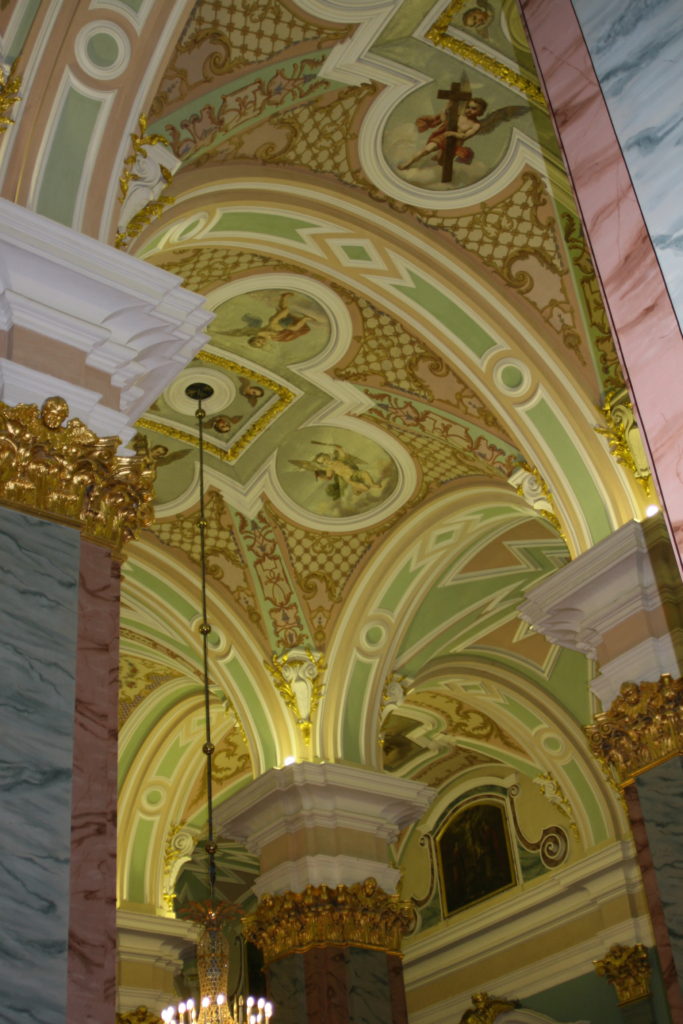
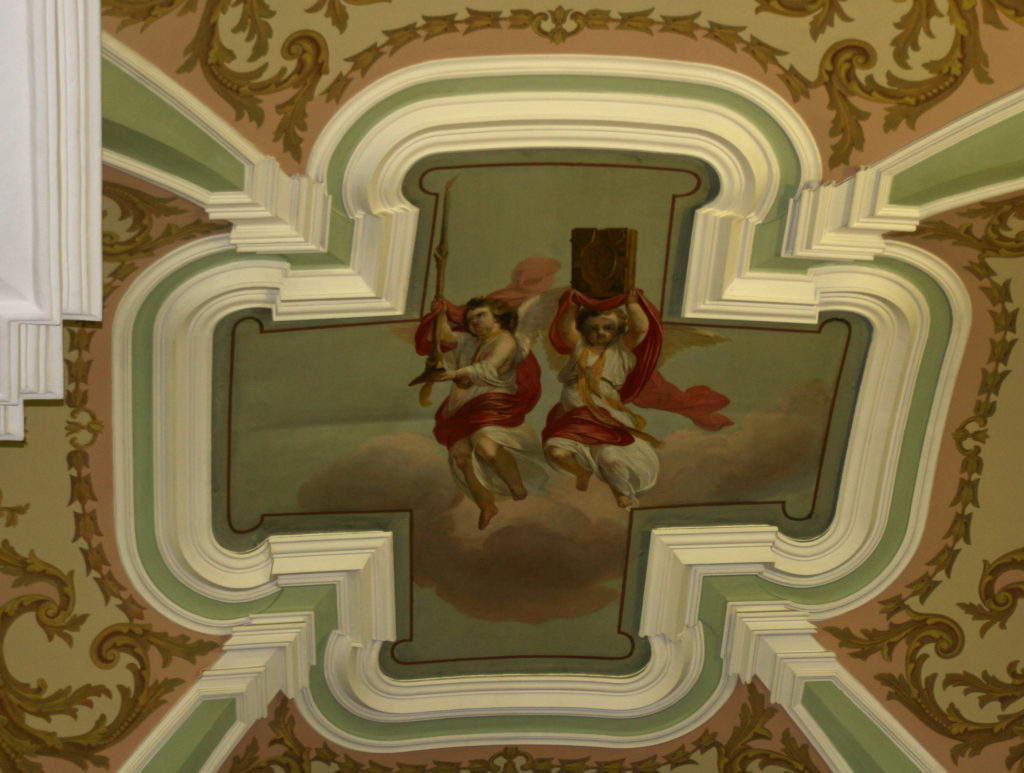
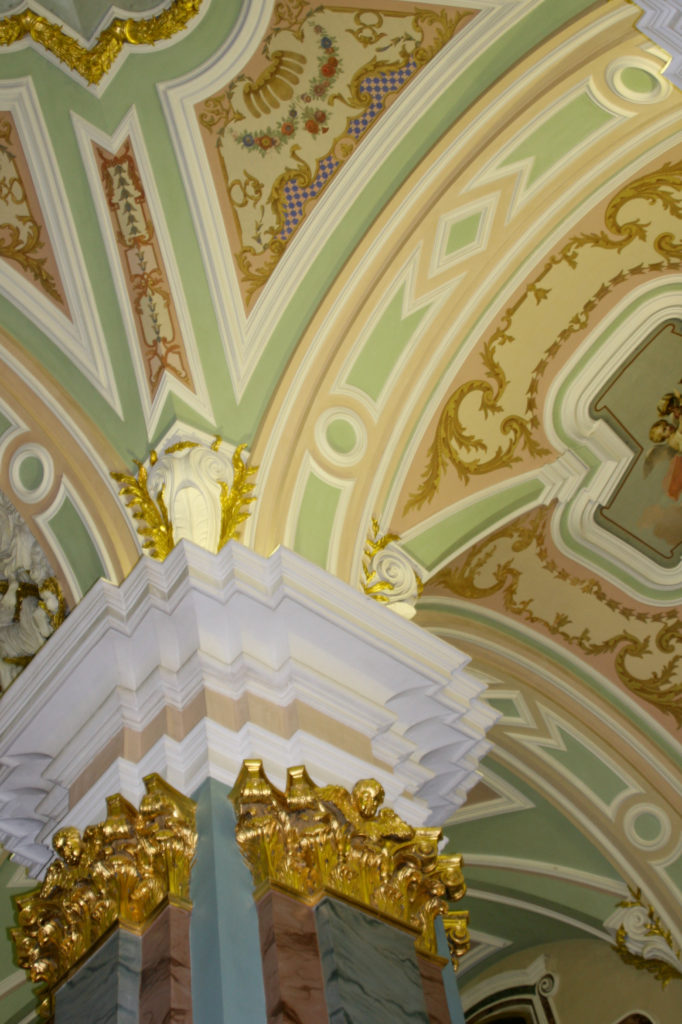
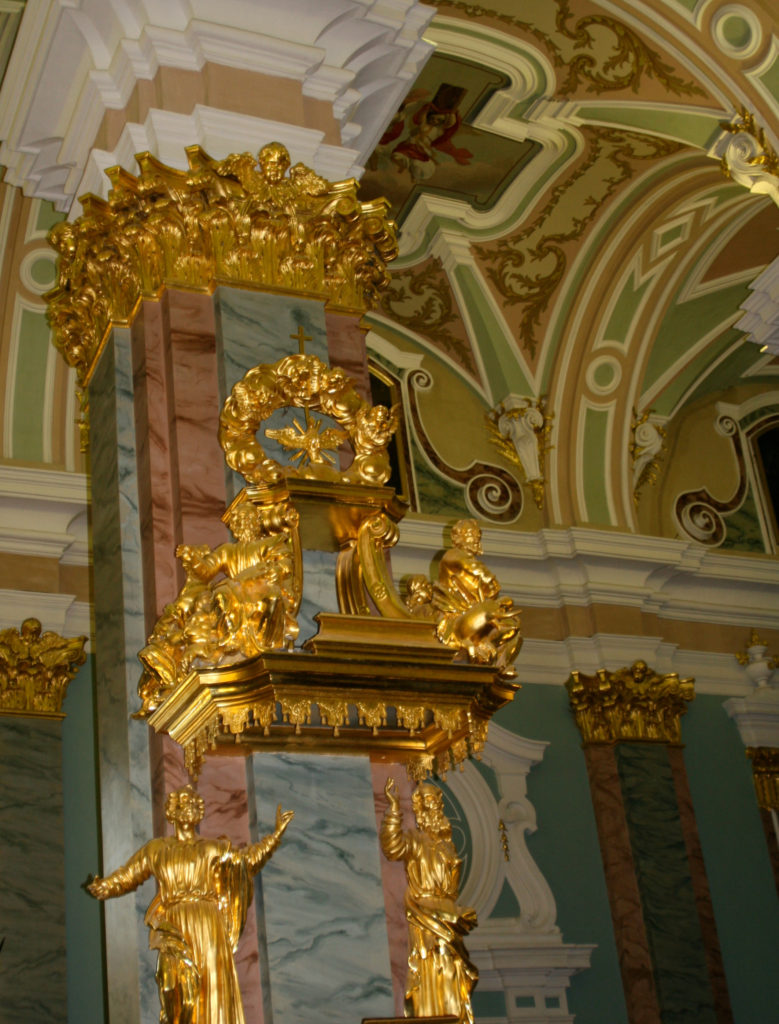
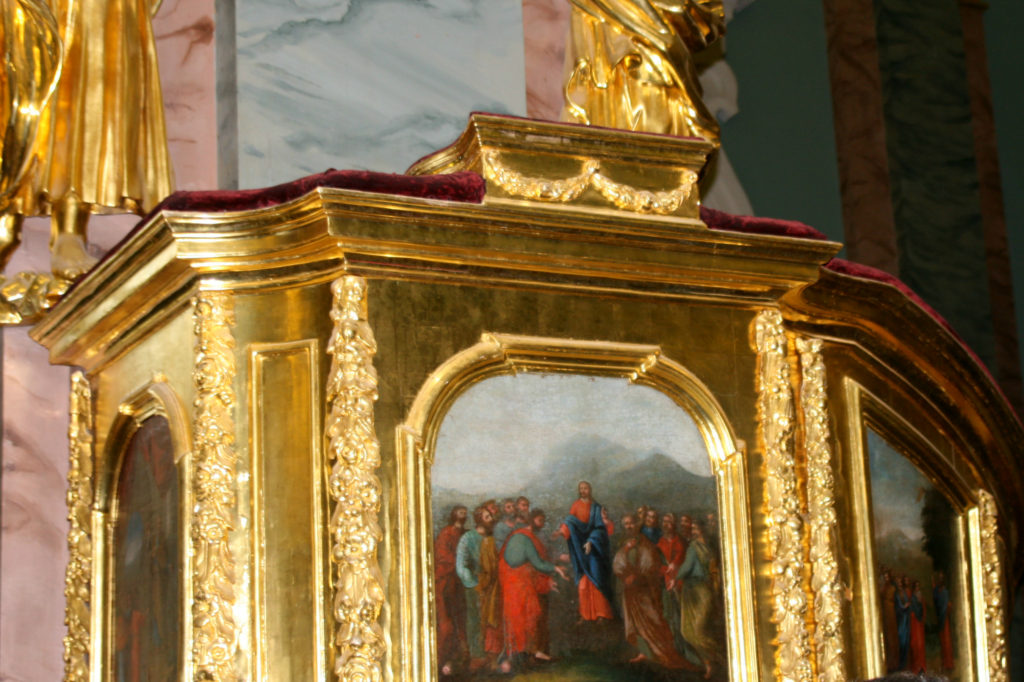
One of the things I have learned about photography since we went on this trip in 2010, is the value of standing back and getting a picture of the whole. I found the first picture below on line, and it does a great job of just that – capturing the areas where the sarcophagi sit, the ceiling and chandeliers, and the beautiful iconostasis.
The iconostasis was designed by Ivan Zarudny and constructed by more than forty woodcarvers in Moscow between 1722-1727. The different parts of the iconostasis were shipped to St. Petersburg and assembled in the cathedral. The wood has been gilted. It is nearly 100 feet tall and has 43 icons. There is also a triumphal arch which symbolizes Russia’s victory in the Northern War. The Royal Doors were initially wood but were damaged because of the harsh climate. They were replaced with exact replicas in 1866, but these were made of bronze and then gilted. The other pictures below are of the altar gate, several of the icons, and the triumphal arch.
